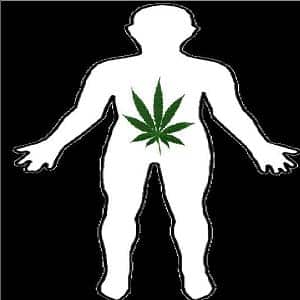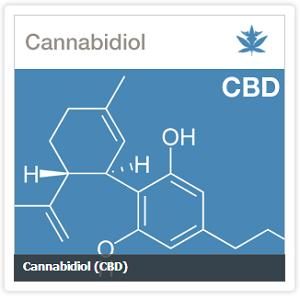
Does Cannabis Help Treat Gastrointestinal Disorders?
This weekend we covered diarrhea, but left out other gastrointestinal disorders. Below is more information about marijuana and gastrointestinal disorders, courtesy of the great people at Americans for Safe Access:
The effectiveness of cannabis for treating symptoms related to gastrointestinal disorders is widely recognized. Its value as an anti-emetic and analgesic has been proven in numerous studies and has been acknowledged by several comprehensive, government-sponsored reviews, including those conducted by the Institute of Medicine (IOM), the U.K. House of Lords Science and Technology Committee, the Australian National Task Force on Cannabis, and others. The IOM concluded, “For patients . . . who suffer simultaneously from severe pain, nausea, and appetite loss, cannabinoid drugs might offer broad-spectrum relief not found in any other single medication.”
The most common gastrointestinal disorders-Irritable Bowel Syndrome and Inflammatory Bowel Disease-affect millions of people. The disorders are different, but each causes a great deal of discomfort and distress and both can be disabling. Painful cramping, chronic diarrhea or constipation, nausea, and inflammation of the intestines are all symptoms of these GI disorders that can be alleviated by cannabis.
Irritable Bowel Syndrome (IBS) is a common disorder of the intestines that leads to stomach pain, gassiness, bloating, constipation, diarrhea or both. Chronic, painful abdominal cramping is common. The cause of IBS is not known, and there is no cure. Researchers have found that the colon muscle of a person with IBS begins to spasm after only mild stimulation. IBS is at least partly a disorder affecting colon motility and sensation.
Inflammatory Bowel Disease (IBD) refers to both Ulcerative Colitis and Crohn’s Disease. Ulcerative colitis causes inflammation of the lining of the large intestine, while Crohn’s disease causes inflammation of the lining and wall of the large and/or small intestine. The causes of IBD are not known, but there are indications that the disease has a genetic component. The immune system changes that accompany IBD suggest that it may be an immune disorder.
The most common symptoms of Crohn’s Disease are pain in the abdomen, diarrhea, and weight loss. There may also be rectal bleeding and fever. The most common complications of Crohn’s Disease are blockage of the intestine and ulceration that breaks through into surrounding tissues. Surgery is sometimes required.
The symptoms of Ulcerative Colitis include diarrhea, abdominal cramps, and rectal bleeding. Some people may be very tired and have weight loss, loss of appetite, abdominal pain, and loss of body fluids and nutrients. Joint pain, liver problems, and redness and swelling of the eyes can also occur. Hospitalization and surgery are sometimes needed.
Research on cannabis and GI disorders
Research suggests that cannabis is effective in treating the symptoms of these GI disorders in part because it interacts with the endogenous cannabinoid receptors in the digestive tract, which can result in calming spasms, assuaging pain, and improving motility. Cannabis has also been shown to have anti-inflammatory properties and recent research has demonstrated that cannabinoids are immune system modulators, either enhancing or suppressing immune response.
Cannabis has a long documented history of use in treating GI distress, going back more than a century in western medicine, and far longer in the east. While clinical studies on the use of cannabis for the treatment of gastrointestinal disorders have been largely limited to investigations on nausea suppression and appetite stimulation-two conditions for which cannabis has been consistently shown to be highly effective – the evidence in support of cannabis therapy for other gastrointestinal diseases and disorders is also strong. There is now extensive anecdotal evidence from patients with IBS, Crohn’s disease and other painful GI disorders that cannabis eases cramping and helps modulate diarrhea, constipation and acid reflux. Recent laboratory research on the endogenous cannabinoid system in humans has identified that there are many cannabinoid receptors located in both the large and small intestines.
Cannabis and new cannabinoid drugs are attractive for GI treatment because they can address a number of symptoms at once with minimal side effects. Cannabinoids alter how the gut feels, affect the signals the brain sends back and forth to the gut and modulate the actions of the GI tract itself.
Beginning in the 1970s, a series of human clinical trials established cannabis’ ability to stimulate food intake and weight gain in healthy volunteers. In a randomized trial, THC significantly improved appetite and nausea in comparison with placebo. There were also trends towards improved mood and weight gain. Unwanted effects were generally mild or moderate in intensity. Cannabis helps combat the painful and often debilitating cramping that accompanies many GI disorders because cannabinoids relax contractions of the smooth muscle of the intestines. In fact, smooth-muscle relaxant properties of cannabinoids are so well established that preparations of guinea-pig intestine are routinely used as an in vitro screening tool to test the potency and function of synthetic cannabinoids.
Research on a variety of rodents has shown that endogenous cannabinoids play crucial neuromodulatory roles in controlling the operation of the gastrointestinal system, with synthetic and natural cannabinoids acting powerfully to control gastrointestinal motility and inflammation. Cannabinoid receptors comprise G-protein coupled receptors that are predominantly in enteric and central neurones (CB1R) and immune cells (CB2R). The digestive tract contains endogenous cannabinoids (anandamide and 2-arachidonylglycerol) and cannabinoid CB1 receptors can be found on myenteric and submucosal nerves. Activating cannabinoid receptors has been demonstrated to inhibit gastrointestinal fluid secretion and inflammation in animal models.
In the last decade, evidence obtained from the use of selective agonists and inverse agonists/antagonists indicates that manipulation of CB1R can have significant results. Research has also shown that in the case of intestinal inflammation, the body will increase the number of cannabinoid receptors in the area in an attempt to regulate the inflammation by processing more cannabinoids.
Cannabinoids have a demonstrated ability to block spinal, peripheral and gastrointestinal mechanisms that promote pain in IBS and related disorders. Animal research also indicates that cannabinoids work well in controlling gastroesophageal reflux disease, a condition in which gastric acids attack the esophagus and for which commonly prescribed medications, such as atropine, have serious adverse side effects.
From this evidence, many researchers have concluded that pharmacological modulation of the endogenous cannabinoid system provides new treatment options for a number of gastrointestinal diseases, including nausea and vomiting, gastric ulcers, irritable bowel syndrome, Crohn’s disease, secretory diarrhea, paralytic ileus and gastroesophageal reflux disease. The experience of patients with these GI disorders shows that for broad-spectrum relief, cannabis is highly effective and frequently helps when other treatment options prove ineffective.
How Cannabis Compares to Other Treatments
The medications currently employed to fight chronic GI disorders include many that produce serious side effects. These side effects frequently threaten the health of the patient and require other medications to combat them. Drugs commonly prescribed to combat GI disorders include:
Megestrol acetate (Megace), an anticachectic. Serious side effects of this medicine include high blood pressure, diabetes, inflammation of the blood vessels, congestive heart failure, seizures, and pneumonia. Less serious side effects of this medicine include diarrhea, flatulence, nausea, vomiting, constipation, heartburn, dry mouth, increased salivation, and thrush; impotence, decreased libido, urinary frequency, urinary incontinence, urinary tract infection, vaginal bleeding and discharge; disease of the heart, palpitation, chest pain, chest pressure, and edema; pharyngitis, lung disorders, and rapid breathing; insomnia, headache, weakness, numbness, seizures, depression, and abnormal thinking.
Prednisone (Delatasone), like all steroids, can have serious adverse musculoskeletal, gastrointestinal, dermatologic, neurological, endocrine, and ophthalmic side effects. These include: congestive heart failure in susceptible patients, potassium loss, hypokalemic alkalosis, sodium retention, and hypertension. Muscle weakness, steriod myopathy, loss of muscle mass, osteoporosis, tendon rupture, vertebral compression fractures, aseptic necrosis of femoral and humeral heads, and pathologic fracture of long bones. Peptic ulcer with possible perforation and hemorrhage; pancreatitis; abdominal distention; ulcerative esophagitis. Impaired wound healing, thin fragile skin, petechiae and ecchymoses, facial erythema. Increased intracranial pressure (pseudo-tumor cerebri) usually after treatment, convulsions, vertigo, and headache. Menstrual irregularities; development of Cushingoid state; secondary adrenocortical and pituitary unresponsiveness; decreased carbohydrate tolerance; manifestations of latent diabetes mellitus. Posterior subcapsular cataracts, increased intraocular pressure, glaucoma, and exophthalmos.
Metronidazole (Flagyl) has been shown to be carcinogenic in mice and rats. Two serious adverse reactions reported in patients treated with Metronidazole have been convulsive seizures and peripheral neuropathy, the latter characterized mainly by numbness or paresthesia of an extremity. The most common adverse reactions reported have been referable to the gastrointestinal tract, particularly nausea reported by about 12% of patients, sometimes accompanied by headache, anorexia, and occasionally vomiting; diarrhea; epigastric distress, and abdominal cramping. Constipation has been reported.
Sulfasalazine (Azulfidine)-The most common adverse reactions associated with sulfasalazine are anorexia, headache, nausea, vomiting, gastric distress, and apparently reversible oligospermia. These occur in about one-third of the patients. Less frequent adverse reactions are pruritus, urticaria, fever, Heinz body anemia, hemolytic anemia and cyanosis, which may occur at a frequency of one in every thirty patients or less.
Chlordiazepoxide/Clidinium (Librax)-Drowsiness, ataxia and confusion have been reported in some patients, particularly the elderly and debilitated. Adverse effects reported with use of Librax are those typical of anticholinergic agents, i.e., dryness of the mouth, blurring of vision, urinary hesitancy and constipation. Withdrawal symptoms, similar in character to those noted with barbiturates and alcohol (convulsions, tremor, abdominal and muscle cramps, vomiting and sweating), have occurred following abrupt discontinuance of chlordiazepoxide.
Hyoscyamine Sulfate (Levsin)-Adverse reactions may include dryness of the mouth; urinary hesitancy and retention; blurred vision; tachycardia; palpitations; mydriasis; cycloplegia; increased ocular tension; loss of taste; headache; nervousness; drowsiness; weakness; dizziness; insomnia; nausea; vomiting; impotence; suppression of lactation; constipation; bloated feeling; allergic reactions or drug idiosyncrasies; urticaria and other dermal manifestations; ataxia; speech disturbance; some degree of mental confusion and/or excitement (especially in elderly persons); and decreased sweating.
Mesalamine CR (Pentasa)-The most common side effects are diarrhea, headache, nausea, abdominal pain, dyspepsia, vomiting, and rash.
Phosphorated carbohydrate (Emetrol)-Side effects include: fainting; swelling of face, arms, and legs; unusual bleeding; vomiting; weight loss; yellow eyes or skin. Less common-more common with large doses: Diarrhea; stomach or abdominal pain.
Dicyclomine (Bentyl)-The most common side effects occurring with dicyclomine are due to its anticholinergic activity: dry mouth, blurred vision, confusion, agitation, increased heart rate, heart palpitations, constipation, difficulty urinating, and occasionally seizures can occur. Other potential side effects include changes in taste perception, difficulty swallowing, headache, nervousness, drowsiness, weakness, dizziness, impotence, flushing, difficulty falling asleep, nausea, vomiting, rash, and a bloated feeling.
Ciprofloxacin (Cipro)-The most frequent side effects include nausea, vomiting, diarrhea, abdominal pain, rash, headache, and restlessness. Rare allergic reactions have been described, such as hives and anaphylaxis.
Methotrexate (Rheumatrex, Trexall)-can cause severe toxicity that is usually related to the dose taken. The most frequent reactions include mouth sores, stomach upset, and low white blood counts. Methotrexate can cause severe toxicity of the liver and bone marrow, which require regular monitoring with blood testing. It can cause headache and drowsiness, which may resolve if the dose is lowered. Methotrexate can cause itching, skin rash, dizziness, and hair loss. A dry, non-productive cough can be a result of a rare lung toxicity.
Diphenoxylate and atropine (Lotomil)-The most common side effects include drowsiness, dizziness, and headache, nausea or vomiting, and dry mouth. Euphoria, depression, lethargy, restlessness, numbness of extremities, loss of appetite, and abdominal pain or discomfort have been reported less frequently. Although the dose of atropine in Lomotil is too low to cause side effects when taken in the recommended doses, side effects of atropine (including dryness of the skin and mucous membranes, increased heart rate, urinary retention, and increased body temperature) have been reported, particularly in children under two.
Cannabis-By comparison, the side effects associated with cannabis are typically mild and are classified as “low risk.” Euphoric mood changes are among the most frequent side effects. Cannabinoids can exacerbate schizophrenic psychosis in predisposed persons. Cannabinoids impede cognitive and psychomotor performance, resulting in temporary impairment. Chronic use can lead to the development of tolerance. Tachycardia and hypotension are frequently documented as adverse events in the cardiovascular system. A few cases of myocardial ischemia have been reported in young and previously healthy patients. Inhaling the smoke of cannabis cigarettes induces side effects on the respiratory system. Cannabinoids are contraindicated for patients with a history of cardiac ischemias. In summary, a low risk profile is evident from the literature available. Serious complications are very rare and are not usually reported during the use of cannabinoids for medical indications.





